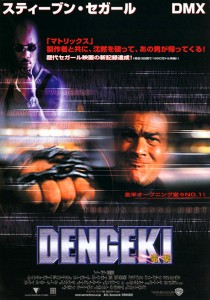
“Exit Wounds” Japanese Theatrical Poster
AKA: Dengeki
Director: Andrzej Bartkowiak
Cast: Steven Seagal, DMX, Isaiah Washington, Anthony Anderson, Michael Jai White, Bill Duke, Jill Hennessy, Tom Arnold, Eva Mendes
Running Time: 101 min.
By Zach Nix
Steven Seagal is one of action and martial arts cinema’s most fascinating creatures. He broke out onto the action scene almost out of nowhere with several fantastic vehicles, such as Above the Law, Hard to Kill, and Marked for Death, that showcased his martial arts and acting abilities. After experiencing a minor taste of A-list stardom with Under Siege, Seagal’s career seemed to immediately tank after words with the release of his deeply personal and widely mocked environmental directorial debut, On Deadly Ground. From there, Seagal’s star faded as he experienced an interesting transitional period made up of minor hits (Under Siege 2, Executive Decision) and notable failures (The Glimmer Man, Fire Down Below).
While some action fans claim that Seagal’s stardom ended in the late 90s, many forget that Seagal experienced a very minor but notable comeback in the early 2000s with Exit Wounds, an urban action thriller that honestly should have catapulted him back to A-list stardom had he played his cards right. Exit Wounds may not be nearly as brutal, simple, or personal as Seagal’s earliest efforts, but it’s still one of his best films and quite honestly one of the most underrated pictures in his filmography.
Seagal plays Orin Boyd, a detective who is clearly underappreciated amongst his peers, as evident by the film’s opening prologue in which he risks his life to save the Vice President of the United States and is instead punished by being moved to the worst precinct in Detroit, Michican. Upon arriving there, Boyd continually stumbles upon crimes and drug dealings linked throughout the city that connect to a mysterious man named Latrell Walker (DMX). As Boyd investigates into the case, he realizes that there may be more to Walker than meets the eye, and that the cops within the precinct may be dirty and linked to the crimes as well.
The first striking realization that action fans will notice upon watching Exit Wounds is that Seagal looks physically fit. He apparently lost a lot of weight to get back into shape for the film, and it shows. He not only looks fantastic, but also cut his pony tail off. Going from The Patriot, to Exit Wounds, and than to Ticker and Half Past Dead is quite shocking, as Seagal’s weight and build drastically changed in between all of those films. Besides looking absolutely great within the film, Exit Wounds was not only a return to form for “The Sensei,” but a bonafide box office hit. Made for a solid $33 million, the film grossed $79 million worldwide, making it both profitable and commercially successful. Therefore, based upon the film’s box office returns and Seagal’s physical image, Exit Wounds could be declared a through and through comeback, something that few action stars ever experience.
However, Seagal immediately wasted his comeback by starring in 2002’s Half Past Dead, a terribly incoherent picture that featured the plotting of his DTV work but with the budget of a studio picture. It was such a failure, that Seagal did not return to the big screen until 2010’s Machete, although he only has a cameo in that picture. Therefore, Exit Wounds is a unique anomaly within Seagal’s filmography in that it helped reestablish his place back at the top of action cinema, only for him to dive right back into incoherent action with a major studio flop and successive DTV films.
Nevertheless, Exit Wounds is not just a Seagal picture, as it is also notable for being directed by Andrzej Bartkowiak and co-starring DMX, a rapper who was very popular at the time. Therefore, it is quite impressive that the film turned out somewhat competent, given that it had to balance the egos and stardom of both Seagal and DMX, two entertainers whose glory days are long behind them now. Bartkowiak is remembered by action fans for also directing Romeo Must Die and Cradle 2 the Grave, two of Jet Li’s English language films. Those two films, along with Exit Wounds, form a trilogy of urban action films that feature hip-hop soundtracks and several of the same recurring actors, most notably DMX, Isaiah Washington, Anthony Anderson, and Tom Arnold. This trilogy was most definitely a product of what was popular at the time, as seen through its extensive wire-work and hip-hop soundtrack.
As someone who was a director of photography on many action films for several years, it makes sense that Bartkowiak was able to do such a solid job with action when promoted to director, as he has a great eye for visual flair and flashy bouts of violence. Barkowiak crafts a competent studio picture that is undeniably entertaining from start to finish thanks to helping heaping of action nearly every ten or so minutes. This might just be one of Seagal’s most action packed films, as shootouts, car chases, and fist-fights are literally around the corner of nearly every dialog scene.
Exit Wounds doesn’t waste any time getting to the action, as Seagal racks up a kill count a mere seven minutes into the film. The opening shootout is one of the best set pieces of the picture, as Seagal’s character fights off a group of armed assassins atop a bridge as they attempt to take out the Vice President of the United States. There’s also a great climactic shootout at the end of the film where all of the characters come together for a dramatic conclusion to the film’s many plot threads. Hong Kong cinema fans will notice a shout out, or blatant steal, from the Hong Kong buddy cop film Tiger on the Beat during the final action scene when DMX wraps his belt around a shotgun and throws it into the air in order to shoot at enemies that he cannot see. One can only wonder if producer Joel Silver, who is a huge fan of Hong Kong cinema and even cast Tiger on the Beat’s Conan Lee in Lethal Weapon 4, came up with that moment.
Although Exit Wounds is a cop thriller, it also has plenty of fist-fights featuring Seagal, DMX, Michael Jai White, and other characters. The fights are hardly brutal or cruel along the lines of early Seagal efforts, opting to be tamer, safer, and flashier. Arms and bones still break, but there’s rarely any audible sound effects when victims suffer said injuries. It’s all fairly middle ground stuff, although squibs and gore shots abound throughout during the shootouts, keeping it somewhat hard edged. The fights in the film are also notable amongst Seagal fans for their obvious incorporation of wirework, something that Seagal typically doesn’t delve into, Belly of the Beast aside.
It makes sense that there is some wire work in the film, as just about every action film released post-Matrix dabbled in the stuff for a few years, especially ones produced by Joel Silver. The wire-work is most obvious during a club brawl in which Seagal flips over a bouncer and even bounces off a string of chains. There’s also some obvious and quite hilarious wire-work in the final showdown between Seagal and Jai White as the two flip through the air whilst holding giant cutting blades. It’s all a ton of fun, and further adds to the flashy studio nature of the picture, but it’s a far cry from the greatness that was Seagal’s brutal hand-to-hand fights of the early years.
While the film is undeniably entertaining from an action standpoint, it leaves much to be desired storytelling wise. First off, the main plot of the picture takes awhile to get going. Much like other Seagal pictures such as Marked for Death and even latter DTV efforts like The Keeper, Exit Wounds opens with a prologue that sets the stage for the rest of the picture. Unfortunately, the first thirty or so minutes of the picture are completely unnecessary in the long run, as they should have been trimmed down significantly in order to get to the more gripping (if you could even call it gripping) story at the center of the picture, Seagal and DMX’s hunt for corrupt officers.
And speaking of DMX, his character’s motives are mostly kept in the shadows and not revealed until two acts into the picture. I always find withholding crucial information like this to be a cheap way to “surprise” the audience, as it proves that the filmmakers don’t know any other way to keep viewers engaged other than to string them along.
Based upon the novel of the same name, Exit Wounds offers up characters and themes consistent within Seagal’s filmography and personal beliefs. His character, Orin Boyd, is a cop whom is simply disgruntled with the rules of the system. When he risks his life to save the Vice President, he is reprimanded, moved elsewhere, and declared everything but a hero. While this opening portion of the film only serves the purpose to explain how Seagal ends up in a new precinct, it also represents Seagal’s continuing and innate frustration with law enforcement and the system that surrounds him. Making Exit Wounds a Seagal vehicle was a good idea because it also deals with internal affairs and dirty cops. These themes concerning shady protective agencies appear within other Seagal ventures, and always reinforce his best work. After all, Seagal does such a great job embodying characters who fight for what is right and protect the innocent, whilst also rebelling against the system that employs him.
And last but not least, one can’t go without mentioning that Exit Wounds is not only one of Seagal’s more overtly comedic films, but successfully comedic as well. Let it be known that Seagal actually got a couple laughs out of me in this film, especially during an anger therapy group scene where he declares, “Do you see this face? This is a happy face! You all, would be lucky, to be as happy as I am.” Most of the humor is fairly silly and mainstream-esque in nature, such as Seagal being too big for a classroom chair or him being forced to direct nearly uncontrollable traffic, but it honestly works. Comic actors Anthony Anderson and Tom Arnold don’t serve the narrative very much, and easily could have been chopped out of the picture altogether, but the two go a long way in adding laughs and charisma to the picture. Their joke a second fest during the end credits could be a stand up comedy act in and of itself, and yet it’s attached to the end of a Seagal/DMX venture. Go figure. Unlike The Glimmer Man, which is one of Seagal’s most painfully unfunny action films, Exit Wounds has some pretty reliable comedy that helps liven the mood when things get more serious. You may disagree with me, so watch The Glimmer Man and Exit Wounds back to back, and than you’ll most likely side with Exit Wounds as to which of the two is funnier. On second thought, scratch that. Don’t watch The Glimmer Man, it’s an abysmal picture.
Although the story takes a while to take form and a large cast of characters over crowd the film’s narrative, Exit Wounds is a thoroughly entertaining crime thriller from start to finish thanks to a somewhat reliable narrative, a pulsating sense of energy, and a non-stop variety of action sequences. I would go so far as to say that Exit Wounds is leaps and bounds better than some of Seagal’s lesser 90s work, such as The Glimmer Man, Fire Down Below, and The Patriot, as it is never boring and mostly competent. Whenever people mention how Seagal’s downfall began in the late 90s, make sure to always pull out the Exit Wounds card in order to tear down their theory and to prove that “The Sensei” still had the chops, even in 2001.
Zach Nix’s Rating: 7/10

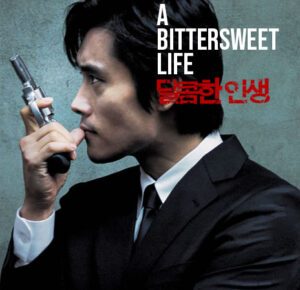



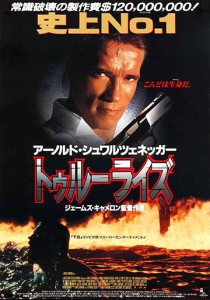




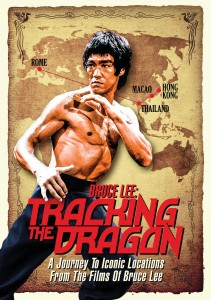






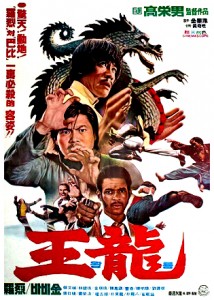





3 Comments